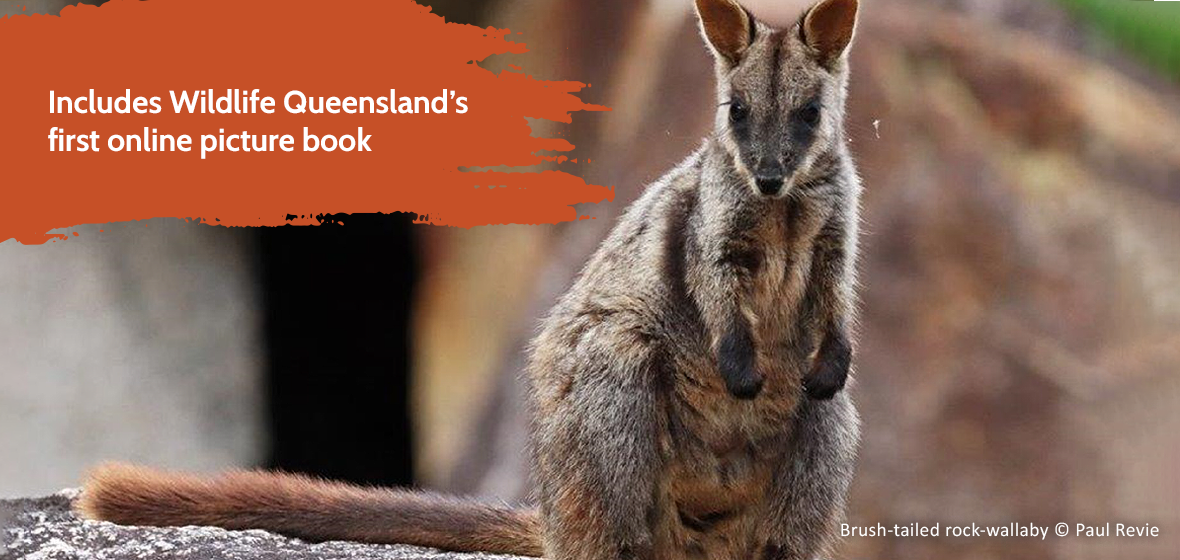
24 March 2023
Since the start of the year, Wildlife Queensland’s Brush-tailed Rock-wallaby Conservation Network (BTRWCN) has been busy continuing its conservation work for vulnerable brush-tailed rock-wallaby (BTRW) populations in South East Queensland (SEQ).
Our project officer, Paul Revie, set up many camera traps at new locations, including Logan, Carneys Creek, Mount Barney and Crows Nest. The infrared camera monitoring will be used to identify BTRW populations and collect information to help formulate plans for pest and weed management initiatives at each site.
Carneys Creek
In January, Paul conducted a camera trap survey on four private properties at Carneys Creek in the Scenic Rim. The cameras were left out for 16 to 18 days to monitor BTRW and potential threats (feral animals). BTRW were recorded on 14 of 25 cameras, and only low densities of pest animals were observed. Very promising!
The survey demonstrates that the Carneys Creek area supports an important meta-population of BTRW most likely linked to adjacent Main Range National Park populations.
Our BTRWCN project team will now plan pest and weed control and will continue monitoring to assess how the populations benefit from control activities.
Mount Barney
Paul also headed to the northern part of Mount Barney in the Scenic Rim region in January to set up camera traps. Encouragingly, he spotted BTRW scat at one of the survey sites. We’ll keep you posted on the results.
Crows Nest
In March, Paul set up cameras to monitor an important colony of BTRW at Perseverance Dam, Crows Nest. He sighted eight individuals on the day of set up, including two adult males, two adult females, three independent juveniles and a little joey.
Check out Wildlife Queensland’s first online picture book using the photos Paul took of the colony.
And stay tuned for updates … we suspect some joeys may be on the way!
Flinders-Goolman
BTRWCN project officer Hannah Thomas has been searching for BTRW on properties in the Flinders-Goolman region of Logan and Ipswich.
Excitingly, data collected from infrared cameras showed the existence of a colony present in this environmentally pressured area where only anecdotal evidence existed before. The BTRWCN will assist the property owners with targeted weed control to improve the habitat quality for the population.
Get involved!
BTRW are dealing with multiple threats to their survival, including habitat destruction, weed invasion, predation by feral animals and competition for food with other introduced herbivores.
To help our vulnerable ‘brushies’:
- Join the BTRWCN and get involved! In the coming months, we’ll be advertising BTRW volunteer weed days at Carneys Creek and other locations, so make sure you’re signed up to receive more information.
- Find out more about the habitat requirements of our vulnerable ‘brushies’ and how you can help them by downloading our new guide.
The Brush-tailed Rock-wallaby Recovery in SEQ project is funded by the Australian Government’s Environment Restoration Fund — Threatened Species Strategy Action Plan — Priority Species Grants.
